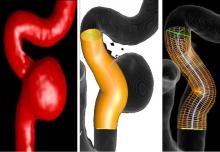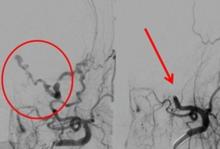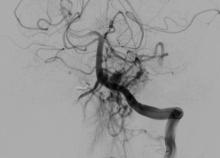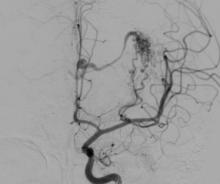Endovascular management of non-ruptured intracranial aneurysms with flow diverter devices. First experience in Peru.
Endovascular treatment of non-ruptured intracranial aneurysms with flow diverter devices is a technique that currently has many indications for its use. We present a retrospective review of consecutive cases treated with flow diverters at our institution. Since October 2012 to April 2017, twenty-one patients were treated with a total of 29 non-ruptured aneurysms.







